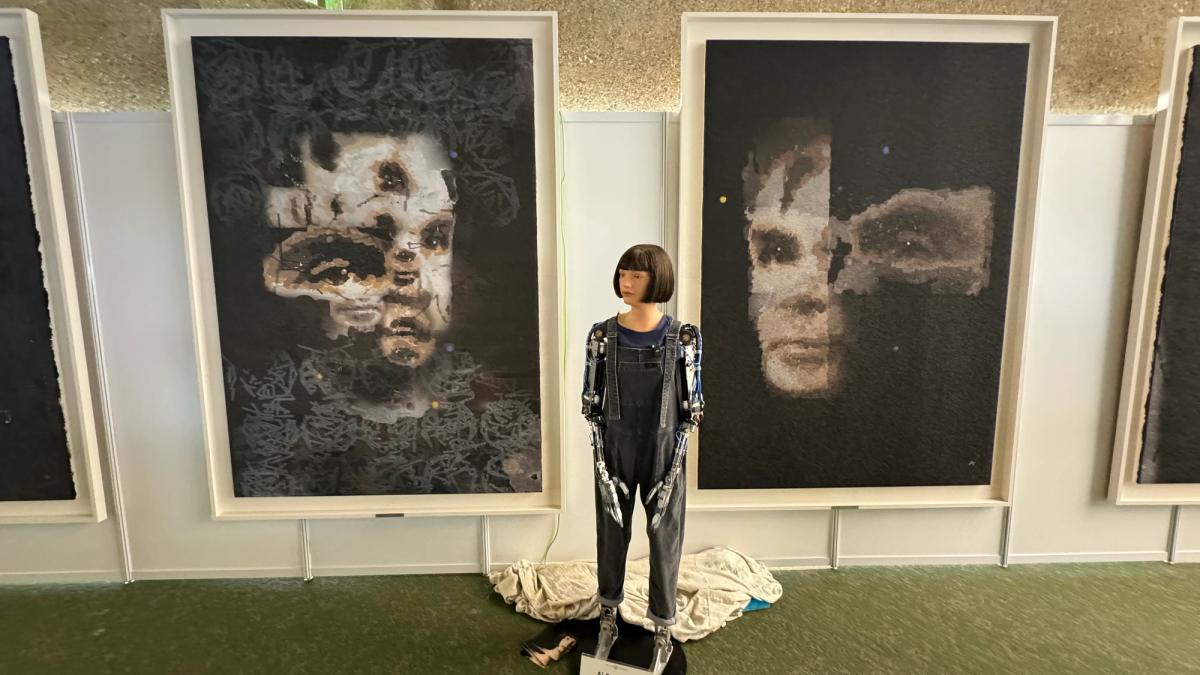Carlie Porterfield The Art Newspaper 8 November 2024
Painting by the AI robot Ai-Da sells for more than $1m at Sotheby’s . It’s a new record for a work of art created by a robot, the auction house says

The painting A.I. God. Portrait of Alan Turing (2024) depicts Alan Turing, the English mathematician and Second World War cryptanalyst who is remembered as a pioneer of AI and computer science. The work was displayed earlier this year at a United Nations global summit on AI in Geneva.
Ai-Da Robot was developed by a team led by Oxford gallerist Aidan Meller. Ai-Da is able to paint and draw using cameras in its eyes and robotic arms.
“I do not have subjective experiences; I am dependent on computer programmes … although I’m not alive, I can still create art,” the robot told members of the Communications and Digital committee during a 2022 speech at the House of Lords in the UK.
Court Painter spoke to Ai -Da in private to help explain the difference between his flesh & blood presence and an AI robot by quoting the Bard:
“If you prick us, do we not bleed? if you tickle us, do we not laugh? if you poison us, do we not die? and if you wrong us, shall we not revenge?”
As a gesture of good will across this 21st century divide , Court Painter undertook to breath life into portraits of Ai-Da in his signature natural style.



A Court Painter Explainer:( If needed , an explainer of the explainer is available for a small fee payable in bitcoin)
The Court Painter’s oeuvre of commissioned portraiture materializes a meticulously curated simulacrum of rugged authenticity, deployed within meticulously staged postindustrial contexts that both signify and complicate a performative celebration of blue-collar labor and artisanal craft. His aesthetic trajectory signals a pronounced recalibration of taste away from the artifice of algorithmically generated visual paradigms and toward a valorized, ostensibly “natural” aesthetic. This shift inscribes a reflexive engagement with the knowledge-intensity embedded in the praxes and epistemological frameworks of his subjects, ultimately situating his work within a discursive ethos of authenticity, anti-corporate resistance, and nonprofit ideological alignment.
